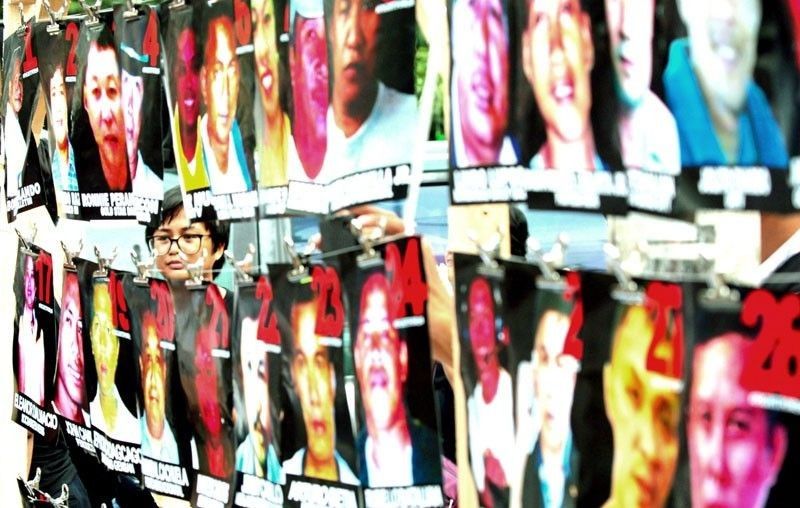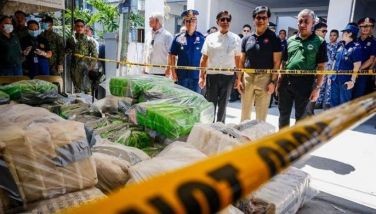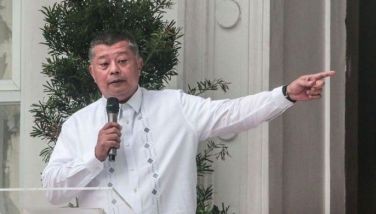10 years since Maguindanao massacre, watchdog sees little change in safety protocols for journalists

MANILA, Philippines — Ten years since the Ampatuan massacre, the world's single deadliest attack against journalists, and there has been “very little” change in security protocols for Filipino media workers, the Center for Media Freedom and Responsibility said.
Melinda Quintos de Jesus, CMFR executive director, said they "did not notice very much at all any additional practices nor developed programs" on safety protocols since the brutal killings.
The gruesome crime claimed 58 lives, 32 of those of media workers.
They were on their way to the Commission on Elections office in Shariff Aguak, Maguindanao to witness the filing of the certificate of candidacy of then-gubernatorial candidate Esmael Mangudadatu.
RELATED: Zaldy Ampatuan back in jail a day before verdict on massacre case
Media owners' responsibility to ensure workers' safety
De Jesus told Philstar.com in a phone interview the media watchdog “did not hear very much from [media] owners their inability” to provide for the safety of their workers.
She explained many community-based news organizations have maintained the practice of having employees "solicit in advertising, be involved in the revenue" to generate money for the company and for themselves.
“[There has been] no real realization of what the responsibilities of an owner is for their people,” de Jesus added.
The CMFR has observed, though, that bigger media organizations provided top-of-the-line safety gear for those who covered the months-long battle for Marawi City in 2017.
De Jesus stressed changes in safety protocol need "investment in time and money, if owners have the means."
She noted that some newsroom safety protocols like having reporters update the desk on their whereabouts when covering sensitive issues and areas do not require a huge investment from newsrooms.
These are, De Jesus said, "basic things when you are working on a very sensitive thing or if you have something that is very critical of powers."
In a pooled editorial published on Wednesday, alternative media network AlterMidya stressed that not a lot has changed in the political landscape either.
"A decade has indeed passed but the conditions that led to the Ampatuan massacre remain: political dynasties and patronage are still alive, paramilitary groups have not been dismantled, and the Ampatuans’ collusion with the administration — Arroyo then and Duterte now — still persists," it said.
International funding for training
The large number of journalists killed in the Ampatuan massacre did put the international spotlight on media killings in the country.
De Jesus said it caught the attention of international funders, such as the United Nations Educational, Scientific and Cultural Organization (UNESCO), "to find out how we can promote greater safety."
Philippines has the most “unsolved murders of journalists in countries with [the] worst record for justice,” the Global Impunity Index 2019 of the Committee to Protect Journalists said in a report released October 2019.
The country’s rank as fifth in the Global Impunity Index 2019 overall was “due in part” to the yet unresolved Ampatuan massacre case, the CPJ report said.
Although international assistance did not come immediately after the massacre, the "response improved the capacity of groups working to give training."
Among the groups working to promote media workers' safety is the National Union of Journalists of the Philippines, she added.
In 2018, the NUJP published its “Philippine Journalist Safety Guide.” The media workers' group has also been conducting safety trainings and workshops for journalists across the country.
"The massacre itself raised greater international consciousness in finding a way to help promote a community that is [safer for media workers]," De Jesus said.
November 2019 saw the release of the Philippine Plan of Action on the Safety of Journalists,a project implemented by the Asian Institute of Journalism and Communication and the International Media Support.
The plan of action was informed by input from the Journalist Safety Advisory Group, which composed of CMFR, NUJP, AIJC, IMS, the Center for Community Journalism and Development, and the Philippine Press Institute.
Among the plan's flagship areas is Creating Conducive Working Conditions, which includes occupational safety education.
The plan also includes working towards regular dialogues between the media and security forces. The plan also calls for the creating of better mechanisms for reporting and responding to attacks against journalists
Verdict seen to change media landscape
It took more than 10 years, but justice may finally be within reach of the massacre’s victims on December 19: Judge Jocelyn Solis-Reyes will hand down her ruling on the decade-long trial where 101 people, including members of the still powerful Ampatuan clan, stand accused.
AlterMidya, a network of alternative media outfits, said in a statement Wednesday that the Ampatuan case “is one more indication of the fact that in the Philippines, a verdict in the lower courts even on a patently heinous crime will take at least a decade.”
They lamented that a “decade can pass without attaining justice.”
READ: Mangudadatu confident of guilty verdict in Ampatuan massacre case
They stressed that the public is expecting nothing less than a guilty verdict from Solis as it would “be considered an initial victory against impunity.”
De Jesus, for her part, said that a guilty verdict of “somebody that has been identified with very strong political allies, someone who is politically prominent, accused with means to hire legal luminaries who will be able to manipulate the rules and regulations of the court” would mean a notice “that there might be an end to their feeling of immunity from punishment.”
It would also mean a “hopeful interruption,” as she said that personally she feels that “justice has been broken down.”
But if the court finds the suspects guilty, especially those primarily accused of being behind the crime, “we can say that maybe, there are some greater care or sense of responsibility to the duties of law enforcement,” De Jesus added.
Media will soldier on
If Reyes will rules to acquit, however, De Jesus said it will “confirm our worst fears that the law works for the powerful.”
AlterMidya noted Filipino journalists are working in a climate “when attacks against free expression” and where killings and illegal arrests happen, but they vowed that media should “remain undaunted.”
READ: No justice a decade after Maguindanao massacre as 'lawless political culture' remains — HRW
“Despite the stark lesson on how elusive justice is from the Ampatuan massacre case, journalists, activists and advocates must not only soldier on, but also up the ante in the fight to shatter the culture of impunity that has enveloped the nation,” they added.
If the Ampatuans would go scot-free, AlterMidya said, however, it "would spell death to press freedom."
- Latest
- Trending






























